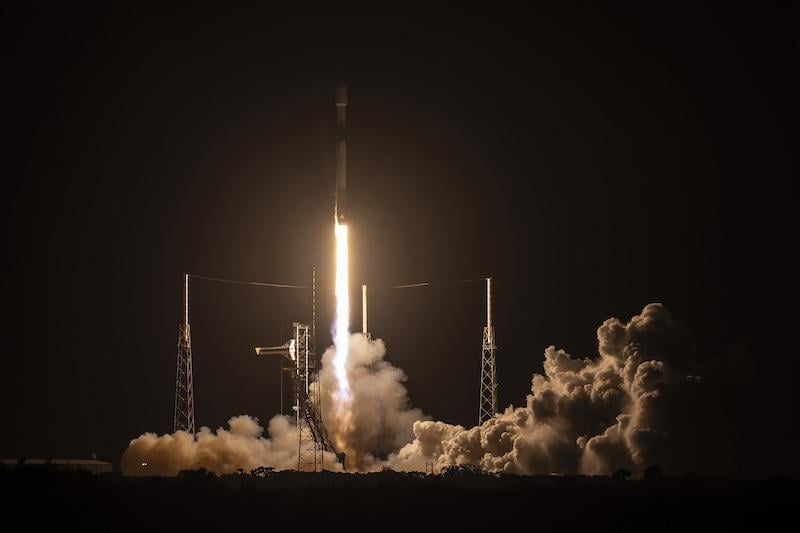This article is published in Aerospace Daily & Defense Report part of Aviation Week Intelligence Network (AWIN), and is complimentary through May 01, 2025. For information on becoming an AWIN Member to access more content like this, click here.

The Phoenix 1 capsule launched on April 21 from Cape Canaveral SFS on a SpaceX Falcon 9 as part of the Bandwagon-3 rideshare mission.
German startup ATMOS Space Cargo is assessing what changes it may make to its cargo return system due to fly next year after the first test of its Phoenix system was somewhat more challenging than anticipated.
The test validated key elements of the system, including the ability to receive data from the capsule and onboard payloads in space, as well as validating capsule flight avionics, CEO Sebastian Klaus said. ATMOS also received information that the heat shield to protect the capsule during reentry deployed, though the protective system’s full performance is still being assessed, he told reporters on a call.
The Phoenix 1 capsule launched at 8:48 p.m. EDT on April 21 from Space Launch Complex 40 at Cape Canaveral SFS on a SpaceX Falcon 9 as part of the Bandwagon-3 rideshare mission. The vehicle deployed about 90 min. after launch, reached its interface point 2 hr. after launch and splashed down about 30 min. later.
The mission several weeks ago became more challenging when SpaceX changed the profile of the Falcon 9 flight to accommodate the needs of a higher-priority payload. That left ATMOS having to scramble to adjust to a new splashdown site—east of South America rather than east of Africa—and a steeper and therefore more challenging reentry profile that led to loads that exceeded what the vehicle was designed for, Klaus said.
It also eliminated the ability, given the company’s limited resources, to try to recover the capsule that came down around 2,000 km (1,240 mi.) off the coast.
Still, Klaus said, the mission was largely a success. “We got a lot of flight data,” he said.
ATMOS is already working on Phoenix 2, although the exact timing of next year’s mission is somewhat contingent on the data analysis of the recent flight, said Christian Grimm, lead systems engineer at ATMOS. The company already has picked the propulsion system for Phoenix 2, which will also give ATMOS more control over the reentry than in the previous mission.
Grimm noted, though, that Phoenix 2 is only one in a series of development steps for its system. The company has opted to pursue a test profile of flying more often to gather data and iterate its design.
ATMOS said the heat shield will be able to scale and could, at some point, facilitate reentry of a system with up to 25 metric tons of cargo. “We're talking about a 20-ft. sea shipping container that you could bring back from space,” Klaus said. “We are developing pretty much building blocks for this technology so that we are able to return anything from space."





